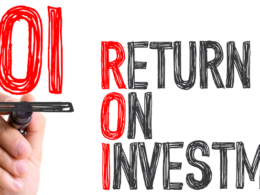Have you ever wondered how global giants like Amazon manage to deliver packages to your doorstep with clockwork precision, even during peak shopping seasons?
Or how your favorite local coffee shop ensures a fresh supply of beans every morning?
The answer lies in the art and science of supply chain management, a critical component of virtually every industry. But what keeps these supply chains humming efficiently, ensuring that products are delivered on time, costs are minimized, and customers are delighted?
The secret sauce is data, and the science that transforms it into actionable insights is called business analytics. In an era where information is the currency of success, businesses are increasingly turning to data-driven strategies to optimize their supply chains.
The role of business analytics in supply chain optimization is nothing short of transformative, revolutionizing the way companies plan, source, produce, and deliver goods and services.
How Does Business Analytics Play a Vital Role in Optimizing Supply Chains?
In this blog, we will embark on a journey to explore the fascinating intersection of business analytics and supply chain management. We’ll unravel the mysteries behind how data analytics is reshaping the world of logistics and why it has become an indispensable tool for modern businesses.
So, fasten your seatbelts as we dive into the world of supply chain optimization powered by business analytics. We’ll start by understanding the fundamentals.
The Supply Chain Conundrum: Balancing Act or Juggling Act?
Imagine a supply chain as a complex web of interconnected activities, spanning from procuring raw materials to delivering finished products to customers. In this intricate dance, businesses must strike a delicate balance between various factors: minimizing costs while maintaining product quality, managing inventory efficiently, optimizing transportation routes, and meeting customer demands promptly.
Traditionally, supply chain decisions were often made based on experience and intuition, a hit-or-miss approach that left room for costly errors. But in today’s data-rich landscape, businesses no longer need to rely solely on gut feelings. They can leverage data-driven insights to make informed decisions, optimize processes, and address potential issues before they disrupt the flow of goods.
The Data Deluge: Turning Information into Intelligence
Businesses now have access to a treasure trove of data, thanks to advancements in technology and the proliferation of connected devices. Every step in the supply chain generates valuable data points: from tracking the movement of goods with GPS sensors to monitoring inventory levels with RFID tags. This avalanche of data has the potential to revolutionize supply chain operations, but only if it can be transformed into actionable intelligence.
Here’s where business analytics comes into play. By harnessing the power of data analytics tools and techniques, organizations can extract meaningful insights from the mountains of data at their disposal. They can identify patterns, forecast demand, detect bottlenecks, and optimize routes, all with the precision of a seasoned conductor leading an orchestra.
- But what are the specific ways in which business analytics shape supply chain optimization?
- How can it enhance forecasting accuracy, improve inventory management, and streamline distribution?
- And how are leading companies leveraging analytics to stay ahead in the competitive world of supply chain management?
The Analytics Advantage: A Sneak Peek
In the upcoming sections of this blog, we’ll delve deeper into these questions and explore the concrete ways in which business analytics transform supply chain processes. We’ll discuss predictive analytics, which allows companies to anticipate demand fluctuations with remarkable accuracy.
We’ll uncover the power of prescriptive analytics, which recommends optimal actions to improve efficiency. And we’ll reveal how real-time analytics provides the agility needed to respond swiftly to disruptions, ensuring a seamless flow of goods.
Stay with us on this journey, and by the end, you’ll understand why business analytics isn’t just a buzzword; it’s a game-changer for supply chain optimization. Whether you’re a seasoned logistics professional or new to the world of supply chains, there’s something here for everyone.
Let’s dive in!
1. Predictive Analytics: Anticipating the Supply Chain Symphony
One of the most remarkable facets of business analytics in supply chain management is predictive analytics. It’s like having a crystal ball that can forecast future supply chain events with uncanny accuracy. By analyzing historical data, market trends, and a myriad of variables, predictive analytics helps organizations peer into the future.
Imagine you’re a retailer gearing up for the holiday season. Predictive analytics can provide insights into the likely demand for your products, allowing you to optimize inventory levels and adjust your production schedule accordingly.
This proactive approach prevents the overstocking or understocking of goods, minimizing costs and ensuring that your customers find what they need on the shelves or online.
2. Prescriptive Analytics: The Maestro’s Baton
Prescriptive analytics takes supply chain optimization a step further by not only predicting future scenarios but also prescribing optimal actions to achieve desired outcomes. It’s akin to having a maestro conducting the orchestra, guiding each musician to play their part at precisely the right moment and in perfect harmony.
For instance, let’s say you’re a manufacturer dealing with a sudden disruption in your supply chain due to unforeseen weather conditions. Prescriptive analytics can analyze the situation in real-time, recommend alternative suppliers, adjust production schedules, and even optimize transportation routes to minimize delays.
It’s like having a trusted advisor who can provide precise instructions on how to navigate unexpected challenges, ensuring your supply chain remains resilient.
3. Real-time Analytics: The Conductor’s Baton
In the fast-paced world of supply chains, real-time analytics is the conductor’s baton that keeps the performance on track. With the ability to process and analyze data as it’s generated, organizations can make split-second decisions to respond to changing conditions.
Consider a global logistics company managing a vast fleet of trucks. Real-time analytics can monitor the location, status, and performance of each vehicle.
If a truck encounters unexpected traffic congestion, the system can immediately reroute it to a faster path, optimizing delivery times and customer satisfaction. This level of agility and responsiveness is a testament to the transformative power of real-time analytics.
As we’ve glimpsed into the world of business analytics in supply chain management, it’s clear that data-driven insights are no longer optional but essential for success. Predictive analytics, prescriptive analytics, and real-time analytics are the virtuoso performers that can turn a chaotic supply chain into a harmonious symphony.
Whether you’re a logistics manager, a supply chain analyst, or a business leader, embracing business analytics is the key to staying ahead of the competition. It’s about making decisions with confidence, optimizing processes with precision, and ensuring the seamless flow of goods to delighted customers.
So, are you ready to join the orchestra and let business analytics lead the way to a more efficient and resilient supply chain?
Ready to elevate your expertise in business analytics?
 Pin
PinJoin Accredian’s Executive Program in Business Analytics, offered in partnership with IIT Guwahati, and take the next step in advancing your career.






